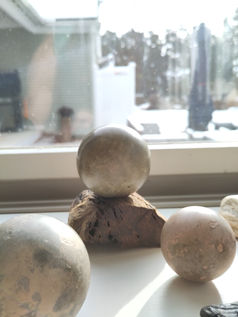

DORODANGO
What Is a Hikaru Dorodango?
An eloquent example the Japanese culture's way of approaching life is the “hikaru dorodango” or simply “dorodango” which is the molding of a perfect sphere of dirt, clay or mud. In fact, in its origin and even its etymology (“doro” means mud in Japanese), dorodango is closely linked to the childhood fun of playing with mud, and in this specific case with moistened soil, suitable for manipulating and forming more or less firm figures.
Over time, though, the entertainment has been refined and embellished. Beyond simply using other materials, it’s never lost its essence and its link with the land of its origin. “Hikaru” means brightness, because in this type of dorodango the sphere of clay or mud, is allowed to dry. It is then passed over again and again by finely sieved powder, so that in the process, the sphere gradually acquires a layer of gloss, color and texture depending on the qualities of the powders used.
An exercise in which patience, perseverance, and a relinquishment of expectations is taught by the material at hand. Taking this notion to a cosmological perspective, we can see that the most ubiquitous shape is the sphere. The sphere is said to be both the shape of the soul and the cosmos, appearing in the physical and nonphysical realms in all sorts of symbols and sizes. Creating a dorodango is like refining our awareness of our true selves and the nature of our reality as spiritual beings incarnated in a physical world. When we can accept, release our attachment to control, and allow the clay in our hands to guide us, the outcome is inevitably perfect.
Everything is simpler than we think, these Japanese cultural expressions seem to tell us. And it’s in that simplicity that we find not complexity, but the richness of life.





















